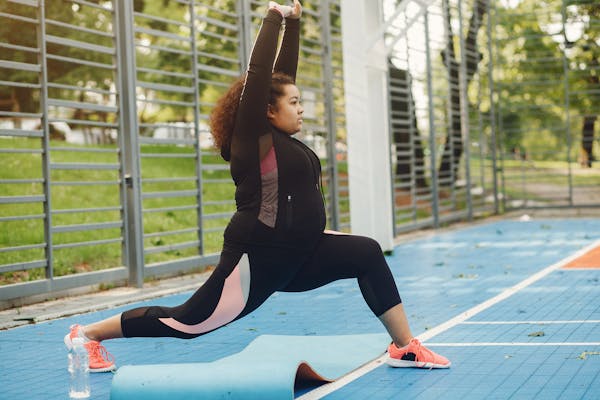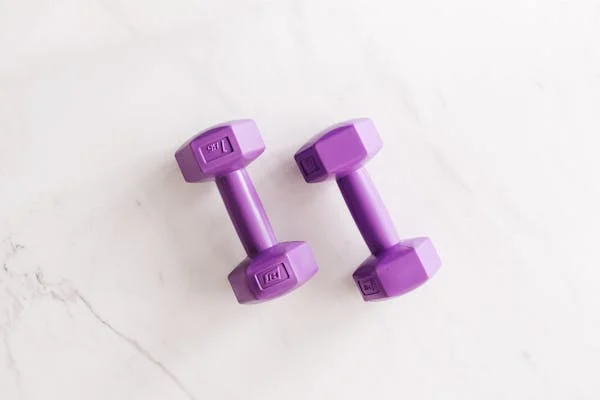5 Simple Fitness Tips to Kickstart Your Healthy Lifestyle
Whether you’re new to fitness or getting back into a routine after some time off, starting with small, manageable changes can make all the difference. Sometimes, the hardest part isn’t knowing what exercises to do—it’s finding the motivation to start and stay consistent. But with the right mindset and a solid plan, you can set yourself up for success and achieve your fitness goals.
In this article, we’ll share five simple fitness tips that can help you kickstart your fitness journey and build lasting habits. These tips are beginner-friendly and designed to fit into even the busiest schedules.
1. Start Slow and Set Realistic Goals
If you’re new to fitness or returning after a long break, it’s important to start slow and set achievable goals. Jumping straight into intense workouts can lead to burnout, injury, or discouragement. Instead, ease into your routine with manageable steps that align with your current fitness level.
Why It Matters: Setting small, achievable goals allows you to build momentum and celebrate small wins. For example, start with walking 20 minutes a day or doing basic bodyweight exercises like squats and lunges. As you build strength and stamina, you can gradually increase intensity or duration. Research shows that gradual progression is key to long-term success and injury prevention (1).
2. Prioritize Consistency Over Intensity

Consistency is the cornerstone of any successful fitness plan. It’s better to work out for 20 minutes a day, five days a week, than to do one intense 60-minute workout per week. The key is making fitness a regular part of your life rather than something you do sporadically.
Why It Matters: When you make exercise a consistent habit, you’ll see better results over time. Regular exercise helps build cardiovascular health, increase muscle strength, and improve flexibility. Plus, it’s easier to stick with a routine if you commit to short, daily workouts that fit into your schedule. Studies show that regular moderate exercise is more effective for long-term health benefits than occasional intense sessions (2).
3. Mix Up Your Routine

Variety is not just the spice of life—it’s also the secret to a well-rounded fitness routine. If you only focus on one type of exercise, like running or weightlifting, you may be missing out on important benefits. Try to mix up your workouts to engage different muscle groups and prevent overuse injuries.
Why It Matters: Incorporating a mix of cardio, strength training, flexibility exercises, and balance work will improve your overall fitness and reduce the risk of injury. For example, you can alternate between yoga, strength training, and walking or cycling. This approach helps prevent plateaus, keeps your workouts interesting, and ensures you’re training your body in a balanced way. Research suggests that cross-training can enhance endurance, strength, and flexibility while reducing the risk of injury (3).
4. Listen to Your Body
It’s easy to get caught up in the idea that “more is better” when it comes to fitness, but pushing your body too hard can lead to fatigue, injury, and burnout. One of the most important fitness tips is to listen to your body and take rest days when you need them.
Why It Matters: Rest is an essential part of any fitness plan. Your muscles need time to recover and rebuild after a workout, which ultimately leads to stronger, more toned muscles. Overworking yourself can lead to overtraining syndrome, which can cause fatigue, poor performance, and a higher risk of injury. Pay attention to your energy levels, and if you feel sore or overly tired, don’t hesitate to take a rest day or swap in a lighter activity like walking or stretching. A balanced approach to exercise and recovery is crucial for long-term progress (4).
5. Make Movement a Part of Your Daily Life

You don’t have to spend hours at the gym to stay fit. Everyday activities like walking, biking, cleaning, or even gardening can contribute to your overall fitness. If you struggle to find time for formal workouts, try to incorporate more movement into your day-to-day life.
Why It Matters: Staying active throughout the day can have a big impact on your fitness and health. Small bursts of activity, like walking after meals or taking the stairs instead of the elevator, can add up and improve cardiovascular health, boost metabolism, and help maintain a healthy weight. Studies show that non-exercise physical activity, like walking or standing, is linked to improved health outcomes and can reduce the risk of chronic diseases (5).
Bonus Tip: Track Your Progress
While fitness isn’t about perfection, tracking your progress can help you stay motivated and make adjustments as needed. Whether it’s keeping a journal, using a fitness app, or tracking your workouts with a smartwatch, having a record of your achievements will remind you of how far you’ve come.
Why It Matters: Tracking your progress can keep you accountable and boost your motivation. It’s a great way to see improvements, even on days when it feels like nothing has changed. Plus, being able to look back at your journey gives you a sense of accomplishment and helps you stay focused on your long-term goals.
Conclusion
Fitness is a lifelong journey, and the best way to start is by taking small, intentional steps. Begin with realistic goals, focus on consistency, and be sure to mix up your routine to keep things interesting and effective. Most importantly, listen to your body, rest when you need it, and make movement a part of your daily life. By following these simple tips, you can create a fitness routine that works for you and supports your long-term health and well-being.
Remember, it’s not about perfection—it’s about making progress and building habits that will serve you for years to come.
References
- Shrier, I. “Does exercise intensity matter?” British Journal of Sports Medicine 39.8 (2005): 491-492.
- Jakicic, J. M., et al. “Effect of intermittent exercise on weight loss and cardiovascular fitness.” Obesity 19.3 (2011): 560-566.
- Borms, J. “Cross-training in sports: Benefits for performance and injury prevention.” International Journal of Sports Medicine 13.3 (1992): 275-281.
- Kreher, J. B., & Schwartz, J. B. “Overtraining syndrome: A practical guide.” Sports Health 2.6 (2010): 534-541.
- Lee, I. M., & Paffenbarger, R. S. “Physical activity and the prevention of coronary heart disease.” Sports Medicine 13.3 (1992): 191-203.









Post Comment